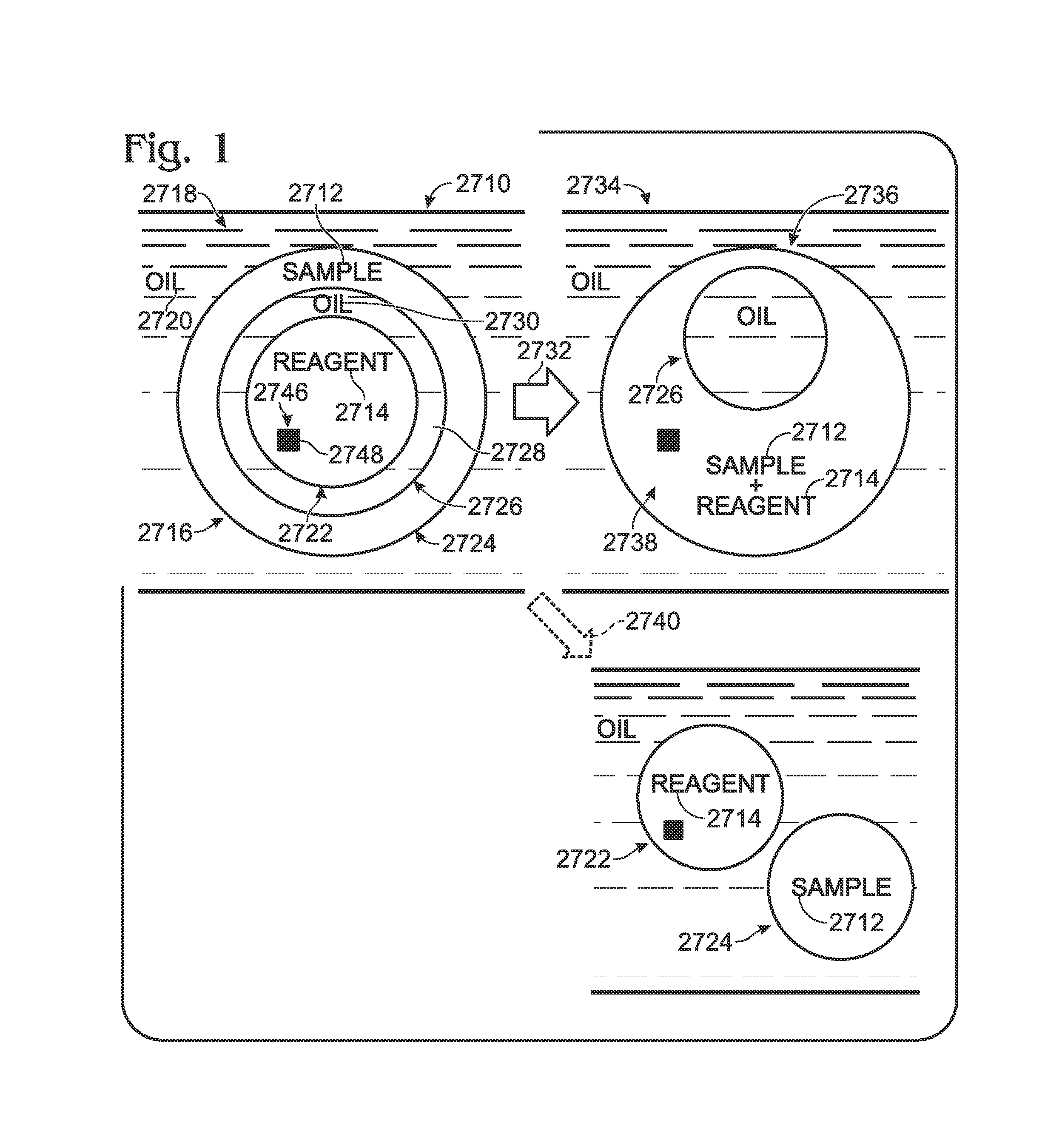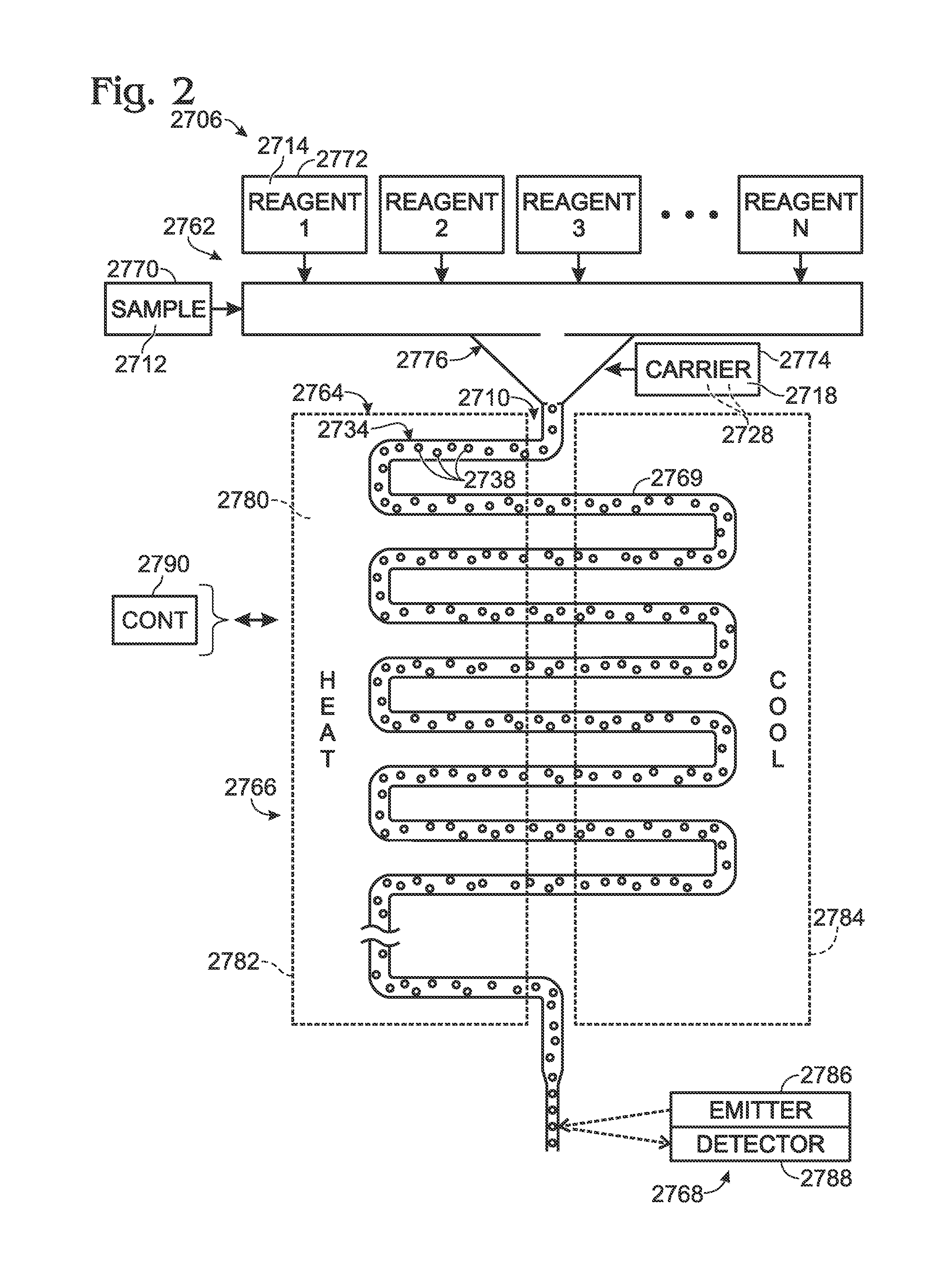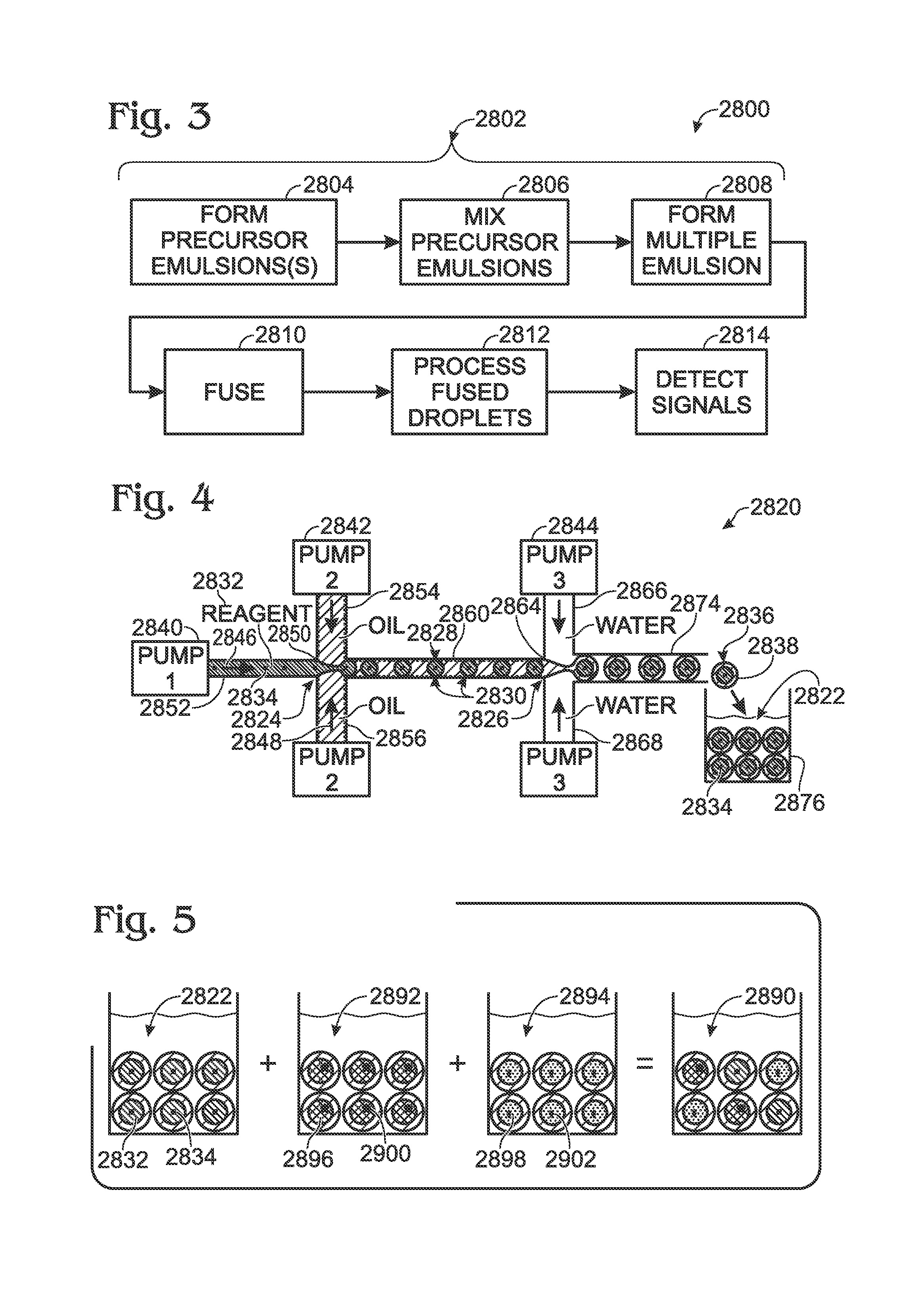Method of mixing fluids by coalescence of multiple emulsions
a technology of emulsion and mixing fluid, which is applied in the field of mixing fluid by coalescence of multiple emulsions, can solve the problems of increasing cost, increasing complexity of instrumentation, and emulsion-based assays presenting technical challenges for high-throughput testing
- Summary
- Abstract
- Description
- Claims
- Application Information
AI Technical Summary
Benefits of technology
Problems solved by technology
Method used
Image
Examples
Embodiment Construction
[0024]The present disclosure provides a system, including methods, apparatus, compositions, and kits, for mixing small volumes of fluid by coalescence of multiple emulsions. The multiple emulsions may be configured to be inducibly coalesced, such as by heating, to provide controlled mixing of small volumes of fluid.
[0025]A multiple emulsion, also termed a compound emulsion and / or droplets within droplets, generally comprises compound droplets dispersed in an immiscible carrier fluid (e.g., oil or water) that forms a continuous phase. Each compound droplet may include at least one sample droplet (i.e., at least one sample-containing droplet) and at least one reagent droplet (i.e., at least one reagent-containing droplet). The at least one sample droplet and the at least one reagent droplet of a compound droplet may be inner droplets or may be at least one inner droplet disposed within an outer droplet (or vice versa). In any event, the sample and reagent droplets may be miscible with...
PUM
| Property | Measurement | Unit |
|---|---|---|
| temperature | aaaaa | aaaaa |
| temperature | aaaaa | aaaaa |
| average volume | aaaaa | aaaaa |
Abstract
Description
Claims
Application Information
 Login to View More
Login to View More - R&D
- Intellectual Property
- Life Sciences
- Materials
- Tech Scout
- Unparalleled Data Quality
- Higher Quality Content
- 60% Fewer Hallucinations
Browse by: Latest US Patents, China's latest patents, Technical Efficacy Thesaurus, Application Domain, Technology Topic, Popular Technical Reports.
© 2025 PatSnap. All rights reserved.Legal|Privacy policy|Modern Slavery Act Transparency Statement|Sitemap|About US| Contact US: help@patsnap.com



